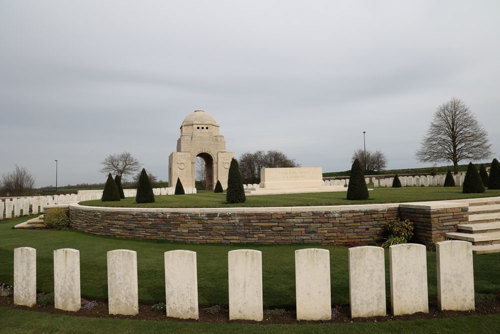01 September 2023
A Guide's Guide to the Somme: Cabaret-Rouge British Cemetery
In our latest Guide's Guide, Estelle Dupont shares what she has learned about the intriguing Cabaret-Rouge British Cemetery.
I THINK YOU SHOULD VISIT CABARET-ROUGE BRITISH CEMETERY

Image: Cabaret-Rouge British Cemetery
Cabaret-Rouge British Cemetery is a beautiful CWGC cemetery that lies just south of the town of Souchez, 11km north of Arras.
Its name is quite unusual: “Cabaret Rouge” was a small, red-bricked, red-tiled café that stood close to the site at the beginning of the First World War. It was destroyed by shellfire in March 1915, but gave its name to the sector and to a communication trench that led troops up the front-line.
Commonwealth soldiers began burying their fallen comrades here in March 1916.
The cemetery was mostly used by the 47th (London) Division and the Canadian Corps until August 1917, and by different fighting units until September 1918. It was enlarged after the war when 7.000 graves were concentrated here from over 100 other cemeteries in the area.
 Image: The eponymous Cabaret Rouge café (memorial1418.com)
Image: The eponymous Cabaret Rouge café (memorial1418.com)
Today, it contains over 7650 burials of the First World War, over half of which remain unidentified. The youngest soldiers buried here are 16 years old; the oldest are 48 years old.
The highest rank that can be found within the cemetery is Lieutenant Colonel; they would have been commanding around 1.000 men, including Headquarters Staff and Supporting Arms.
Many different Commonwealth units served in the sector, and the cemetery contains graves of British, Irish, Australian, New Zealand, Indian and South African soldiers.
Cabaret-Rouge has a particularly close connection with the Canadian Infantry as hundreds of Canadians who were killed at the Battle of Vimy Ridge in April 1917 were ultimately laid to rest here. The Battle of Vimy Ridge was the first action in which all four divisions of the Canadian Corps fought together and had a major impact on Canadian national identity.
Cabaret-Rouge British Cemetery was designed by former Canadian Army officer Frank Higginson; he worked for the CWGC as an architect in the 1920’s and later acted as Secretary to the Commission. After his death, his and his widow’s ashes were scattered in this cemetery in accordance with their wishes.
Interesting features at Cabaret-Rouge British Cemetery
Cabaret-Rouge Cemetery is really unique because it has a lot of interesting features that are worth mentioning.
- If you go to plot 8, Row E, Grave N°7, you will find an unusual headstone. In May 2000, the remains of the unknown Canadian soldier that were buried there were taken away and reburied in a special tomb at the National War Memorial in Ottawa, Canada. He represents more than 71,000 Canadians who lost their lives during the First World War. A new headstone was installed in Cabaret-Rouge Cemetery to commemorate his remains being moved to Canada.
- A few “Special Memorials” can also be found in the cemetery. For example, you will find headstones dedicated to soldiers that died as prisoners of war, and whose graves were lost; they are now commemorated here, due to the fact that Cabaret-Rouge was chosen as a ’concentration cemetery’.
- You will also find headstones for soldiers “believed to be buried in this cemetery”; their bodies could not be located, but there is enough evidence to strongly believe that they were buried within the cemetery’s walls.
- On the side of the cemetery close to the field is a memorial for small mortal remains(like bone fragments) that were found and unfortunately did not allow for the soldiers to be identified; their remains were given a burial nonetheless in Cabaret-Rouge.
- In the left corner, is the grave of Serjeant H. Robinson from the Royal Army Service Corps. He is the only soldier who died during World War II (April 1940) to be buried in the cemetery.
Finally, along one of the cemetery walls, a memorial can be found. It is dedicated to 33 soldiers of the British Empire who died during the First World War and who were buried at the time in various places in the North of France.
However, their graves are now lost; it was decided to commemorate them in Cabaret-Rouge British cemetery with a special memorial.
Private John Fredrick Sjölin
 Image: Headstone of Private John Fredrick Sjölin (Estelle Dupont)
Image: Headstone of Private John Fredrick Sjölin (Estelle Dupont)
Amongst the headstones that were laid out to commemorate the soldiers mentioned above, is Private John Fredrick Sjölin’s. The visitor’s attention may be drawn to it because of the personal inscription on the stone that reads “Sörjd av hustru och tva söner”. This is Swedish and can be translated as “He is survived by his wife and two sons”. However, the regimental badge at the top of the headstone is the Canadian one. To understand this, let’s dive deeper into John’s unique life story.
John Sjölin was christened as Johan Fredrik Sjölin in Oxie parish (close to the city of Malmö) in Sweden on October 28, 1888, and was raised by his mother Sofia Olsdotter and his father Carl Sjölin together with his six older siblings. At first, John was a sailor. There is no record about when he emigrated from Sweden; however he did sign up for the Canadian army as a volunteer on the April 3rd, 1916, where he states that his wife, Anna Karolina, as his next of kin, still remains in Sweden together with their two sons, Gunnar and Knut Bertil.
The information about his profession as a sailor at the time is changed to labourer, which may explain why he chose to emigrate and look for a job in Canada, later leading to his enrolment into the Canadian army.
Around 1680 Swedes enlisted with the Canadian forces in World War One; it is possible that John emigrated to Canada for work, and for the possibility to have a better life and more opportunities there.
John joined his unit, the 85th Infantry Battalion (Nova Scotia Highlanders) in Bramshott, England, and was then sent to France on June 7, 1917. His unit had been fighting since April 9, 1917, at the Battle of Arras and the Battle of Vimy Ridge. John's unit was securing the territory around Lens that they had taken since the battle, about 5 km further east, when he was killed in action on June 18. He was first buried in North Angres British Cemetery.
When Cabaret-Rouge cemetery was enlarged after the war, John’s body was supposed to be brought in as part of the concentration process. However, his remains and those of four other soldiers were not found when digging up the graves. The CWGC concentration record states: “Extensive digging failed to locate the bodies reported to be buried in these graves.”
It was thus decided to erect a special memorial for these soldiers, and this is what can be seen today in Cabaret-Rouge cemetery. The headstone dedicated to John’s memory is one of the few that contains Swedish text.
I would really like to thank Joacim Hallberg who helped me find more information about Private John Sjölin as he is writing a book about the Swedish-born soldiers who took part in World War One. You can visit his website here.
MY PERSONAL CONNECTION TO Cabaret-Rouge Military Cemetery
 Image: Estelle Dupont. Thank you for your hard work Estelle!
Image: Estelle Dupont. Thank you for your hard work Estelle!
I have always been interested in history, having grown up in a region where so many historical events took place. Living now where the front line would have been during the First World War, I have always seen CWGC cemeteries and memorials around me and I always had a desire to learn more about the soldiers, their identities and their stories.
My great-grandfather was a soldier in both wars; he was one of the most important people in my life and he has shaped my interest for military history. I have also studied English at university, so my interest for the work that the Commission does really came naturally.
Cabaret-Rouge is a very scenic cemetery, and I would definitely recommend visiting. From there, you are also very close to Notre-Dame-de-Lorette (the biggest French national WWI military cemetery), to the German cemetery in Neuville-Saint-Vaast and to the Canadian Vimy Memorial for the missing. Cabaret-Rouge is a great place to understand more about the war, the Battle of Arras, the Battle of Vimy Ridge and the work of the Commonwealth War Graves Commission.
the CWGF Guides Programme
The Commonwealth War Graves Foundation Guides Programme is our way of giving young history enthusiasts the chance to get out in the field to discover and share the stories of our war dead.
They become the eyes and ears of the Commission and Foundation on the ground at key sites in France and Belgium.
Visit our Guides page to learn more.

